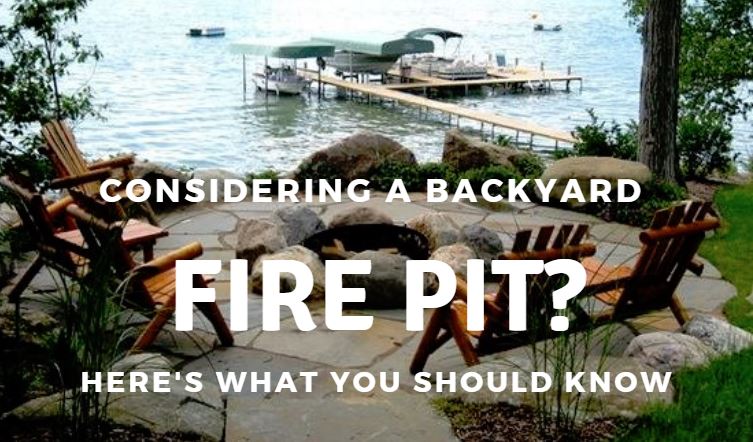
Regardless of which style you choose, you need to make sure that you’re using proper stones and materials (something that shouldn’t splinter when the fire heats up, explains Van Zandt). Make it proportional to the size of your yard, and be sure you have room for seating and circulation.
Wood or Gas?
While there are alternate fuel types like gel fuels, wood or gas seem to be the most common choices. Those who favor a true outdoor smell usually prefer burning real logs, says Van Zandt, who recommends a screen in that case. It also requires a steady supply of firewood.Some fire pits use gas or propane for an instant fire — maybe even powered with a remote switch — though it’s not as hot as a wood fire and you don’t get the same crackle and smoke, explains Van Zandt. Some dual-fuel fire bowls and tables let you do both; and you can design a built-in fire pit to do the same if you have the inclination and budget.
 What to Set It On?
What to Set It On?
It’s best to set a portable fire pit atop a natural surface such as concrete, stone, gravel, brick or slate or on a fire-resistant composite, says HGTV. Putting it on a wood deck can be dangerous if embers fly. A permanent fire pit is typically built on a base of gravel somewhere in the backyard.
Where is the Right Location for Your Fire Pit?
Many communities require a minimum of a 10-foot distance from your house and neighbors’ yards, according to the Seattle Fire Department. Some don’t require a permit if the fire pit fits within set size requirements; others require a site inspection from local fire officials to help make sure your proposed location is safe (away from fences, structures, overhanging branches, etc). And, some communities have outright bans on open fires like in Denver. Check with local officials before you purchase or start planning a fire pit.
How to Create the Right Ambiance?
To enhance your enjoyment, consider installing outdoor lighting near the pit. Make it subtle to avoid destroying the camp-fire mood, advises Van Zandt. Energy-efficient LEDs can be plugged into a nearby outlet without making it necessary for you to hire an electrician, she says. You may also want to consider seating: Maybe metal chairs in a classic Adirondack style, or a low stone wall that’s at least 18 inches high, 12 inches wide, and 2 feet from the pit for safety, says Van Zandt.
What Safety Tips Should I Keep in Mind?
A fire of any kind — no matter the size — demands serious attention to safety. The National Fire Protection Association and ReadyWV offer the following fire pit safety advice:
- Check wind direction before you light a fire.
- Don’t use flammable fluids (gasoline, lighter fluid, etc.) to light or relight fires.
- Don’t wear flammable clothing (like nylon) or any loose-fitting clothing.
- Avoid using soft woods like pine or cedar, because they can “pop” and throw sparks.
- Make sure to keep children and pets at least 3 feet away from the fire.
It’s also important that you know how to safely dispose of the ashes when you’re done with the fire for the night. In some parts of the country — areas prone to wildfires, for instance — disclosing your fire pit may be a requirement of your homeowners insurance policy. It may also be a good idea to check in with an insurance agent to understand any potential impact a fire pit may have on your coverage.
